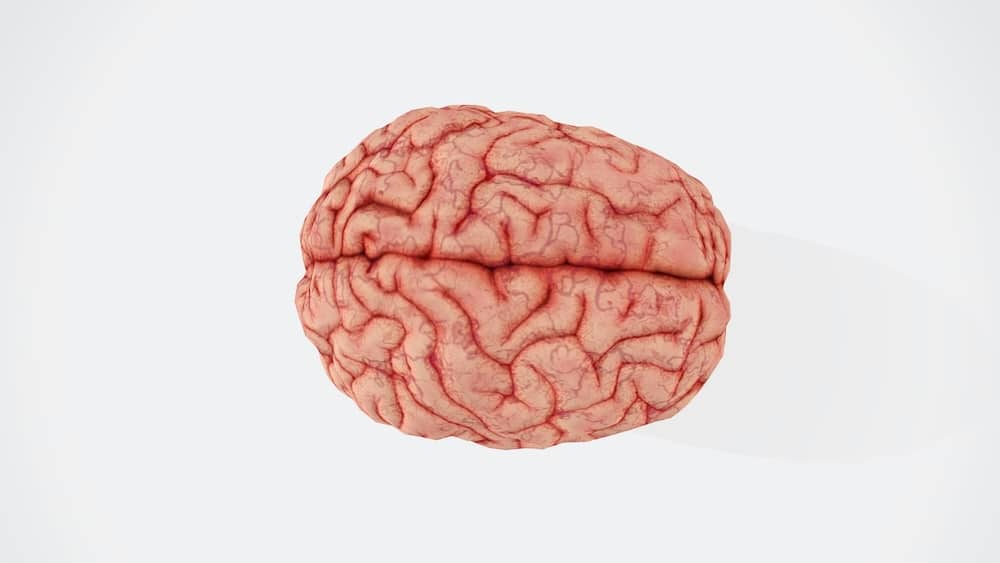Trauma Bonds: The Basics
Many people wonder “Why doesn’t that person just leave their relationship?” This is often directed toward relationships that are chaotic, toxic, and even abusive, such as relationships with domestic violence. But there are deeply complicated psychological- and even biological- forces at play that make it very challenging for people to leave even the most harmful relationships. We call this phenomenon a trauma bond.
What is a Trauma Bond?
A trauma bond is a harmful connection that forms between two people, often a victim and a perpetrator. The target of harm gets linked to their partner through a complicated psychological process called attachment, which can be very challenging for people outside the relationship to understand. This creates an internal cage that stops people from being able to “just leave” hurtful partners- and it causes intense turmoil for those stuck inside.
In 1981, Dr. Dutton and Dr. Painter conducted research to explain why people get trapped in abusive and chaotic relationships. Through their work, they noticed a pattern of “good treatment, bad treatment” which created bonds that were as strong as they were dangerous. Through continued exploration, they uncovered a snowball effect that impacts a person psychologically, physically, and neurologically. This is where “trauma bond” was first coined as a concept. Trauma bonds can happen in many different relationship dynamics: between parents and children, within harmful social groups, in cults, and in romantic relationships- which is the dynamic of focus for this piece.
Someone can know they are being hurt, but the love and care can feel so strong that they can’t disconnect, even if they want to.
To put it simply, a trauma bond forms when someone is exposed to the intermittent reward of “good treatment” following abusive or harmful treatment. This kind of positive reinforcement is known to be the most powerful teacher for behavior because it subconsciously encourages people to continue actions to receive the reward again. The victim is given occasional, unpredictable kindness in between acts of harm, which keeps them stuck in a cycle of trying to get that kind treatment again in the future. As a result, the abuse victims form strong bonds with their abusers, enduring all kinds of pain just to get small doses of pleasure. Someone can know they are being hurt, but the love and care can feel so strong that they can’t disconnect, even if they want to.
Understandably, it’s deeply confusing when the person who shows you love is also the person who hurts you. And in this confusion, people often try to make sense of what is happening, including coming up with reasons to explain why they stay. This eventually leads to cognitive dissonance– or psychological discomfort because your actions don’t match your true desires. You know you don’t want to be mistreated, and yet you find yourself in a relationship where you are being mistreated. Because trauma bonds are so hard to break, it is actually easier to change your mind about the relationship, than it is to leave the relationship. This triggers an internal domino effect where your thoughts change to dismiss the harm, downplay the abuse, or even blame yourself for what is happening. The shame that brews from this can be so strong, that you adapt to find comfort in your own harm, further pushing you into the bonded attachment.
What are the Stages of Trauma Bonding?
Trauma bonding tends to follow seven stages. The gradual, insidious change in how you are treated warps the way you see yourself, and the way you see your partner. The deeper someone gets into the trauma bond, the harder it is to get out.
- Love-bombing
- Dependancy building
- Criticism
- Gaslighting
- Emotional Addiction
- Loss of self
- Resignation and submission
Love-Bombing
Love-bombing is when someone tries to get you to see them as perfect. They convince you that they are safe and are seeking your connection in good faith. It’s a form of manipulative performance. They don’t show their true selves, but rather an act of a partner they think you want to see. This illusion leads you to believe that your partner loves you and will treat you well. This then becomes the marker for how you expect them to be in the future. It’s also a fantasy of who they might someday return to.
Dependency Building
Dependency building is where they get you to rely on them. Then, you not only feel connected to them but also feel like you need them. They may promise to meet all your needs, such as financial, social, and physical needs. They get you to trust them deeply. They do this by taking care of you or solving your problems. This causes you to lose a sense of your own independence.
Criticism
Criticism is one of the first harms in the trauma bond. It starts to break down your self-worth. They may insult your looks. They’ll make you feel small. They’ll be overly critical of your self-care ability. They’ll make you feel unwanted. The idea of the perfect partner has entrapped you, and you rely on them to get through life. But now, you believe you are unworthy and unable to find anyone else but them.
Gaslighting
Gaslighting is where they begin to break down your own connection to reality and truth. They make you question yourself. They lie to you and manipulate you. You slowly lose track of your intuition or judgment. It can feel impossible to know what is happening around you. It can be very unsettling; you can’t trust your own emotions or your own thoughts, forcing you to rely on them even further. You need them to tell you what is true, which gives them greater access to manipulate and control you.
Emotional Addiction
Emotional addiction: Feelings are chemicals that you have an internal reaction to. You crave “positive” emotions, and you might be averse to “negative” emotions. The trauma bond literally manipulates the relationship you have with your own feelings. The relationship constantly incites intense, unpredictable, and confusing emotions. It can be hard to keep track of them. The “negative” emotions grow stronger and more harmful over time. They force the person into behavior that will protect them from these feelings.
For example, if your partner makes you feel guilty for doing things without them, you may start to avoid this guilt by giving up all your hobbies. But positive emotions come less often. You want them so much that you will do anything to feel them again. This causes an addictive response. When they finally make you feel loved and happy, you stay and try to please your partner, just for a taste of this again.
Loss of Self
Loss of self is likely to occur next. You’ve become so wrapped up in the trauma bond that you lose connection to your real self. You might have given up all your true desires to please your partner. You may fear seeking independence. Chaos may have made you so dysregulated that you don’t even know who you are. The trauma bond fills you with shame and isolation. It makes you lose your sense of self outside the relationship. This, in turn, strengthens the attachment. They become all you have.
Resignation and Submission
Resignation and submission: In almost all trauma bonds, the harm becomes more intense, and the good feelings become more intermittent, with cycles of harm almost always escalating into some kind of abuse (verbal, physical, emotional, sexual, etc.). On top of the chaos in the relationship, there is also fear. You fear how you’ll be treated and that you’ll lose your partner. You are being treated poorly, but the trauma bond taught you to stay in the relationship. This can trigger change in people; you abandon self-protection to please the harmful partner and keep the connection. This submission functions to keep you safe, and to hopefully increase the likelihood of receiving “good treatment”.
Repeating Cycles
Repeating cycles happen when someone stays in a relationship for a long time. They go through many rounds of the abuse cycle. The more cycles you see, the more exposure you have to the strength of the “good treatment, bad treatment” pattern. This only deepens the attachment, making it harder and harder for someone to leave.

Repeating cycles happen when someone stays in a relationship for a long time.
How is Attachment Theory Related to Trauma Bonds?
To best understand trauma bonds, you should know attachment theory. Humans need social connections—they are vital to your survival and development throughout life. In infancy, you first attach to your caregivers, which assures your physical survival. As you age, you attach to peers and community members. Then, you attach yourself to romantic partners. Being alone at any stage in life can feel very scary for most people, and almost everyone functions better when they have healthy relationships.
Creating attachments is intuitive. It is considered both an emotional and biological phenomenon. This bond connects you to others for mutual support. From an evolutionary perspective, it is not survival of the fittest, but survival of the most connected. “I help you and you help me.” Because survival is so entwined in attachment, we have come to know that relationships function to keep us safe. Due to this mechanism, we have internal drives to move toward our attachment figures. Think of how a baby crawls towards mom as she walks away, or how an adult seeks a hug when upset- closeness creates safety. This is the attachment behavioral system. It exists to keep you close to your bonded relationships.
Research shows that unhealthy attachments cause anxiety, insecurity, and low self-esteem. These can disrupt functioning, development, and overall safety. An attachment is meant to keep you safe, but if your attachments hurt you, they become a threat.
Healthy attachment is when others respond to your cries with comfort and support. They help you cope and don’t shame you. When the response that you get back is negative, or even harmful, this changes you in your core. These relationships have an impact on your psychological health and your physical health. Research shows that unhealthy attachments cause anxiety, insecurity, and low self-esteem. These can disrupt functioning, development, and overall safety. An attachment is meant to keep you safe, but if your attachments hurt you, they become a threat!
This can cause attachment trauma. It can rewire your alarm system so that you lose the ability to tell if you’re with a safe person. Red flags become harder to detect—or even worse, they become familiar, and you seek them out. The attachment behavioral system still leads you to find closeness to your bonds even if they’re not safe. This forces you to return to the arms that hurt you, causing more and more dysregulation. Because we are wired to help others, this reciprocity is often exploited in harmful relationships. You’re designed to care for your attachment figures, even at your own expense.
Remember, attachment is biological. Studies show that your relationships help manage your internal balance. They affect your heart, blood pressure, and breathing. They also affect the hormones in your blood. When your connections are healthy, you are more likely to be healthy. But if the attachments are harmful, your body changes and becomes less healthy. This causes actual psychological rewiring. You are meant to move towards your attachment figure, but they make you sick. Yet, you still seek them out and therefore become sicker over time.
These studies support the theory that attachment is a non-cognitive behavior, which says that seeking relationships is not a conscious choice. They are instinctive and may be beyond your control. The fear of being alone and isolated is in your DNA. It’s seen as dangerous, so most people will avoid loneliness at any cost. So, many people will try to keep their connections no matter what, even if they are being hurt. The more exposure you have to harmful relationships, the more insecure your attachment style becomes.
- Secure attachment: This is the healthiest style of attachment. You’ve connected to bonds in safe, nourishing ways. You get close to others. You let them get close to you. You trust that they will meet your needs and that you can meet theirs. You usually have many safe attachments, which stop you from relying too much on one person. In solitude, you feel safe and not afraid of being left. This allows you to walk away from unhealthy connections with more ease.
- Insecure-anxious attachment: In this style, someone is so afraid of abandonment that they try to merge completely with the other person. They don’t just want closeness, they want enmeshment. This attachment style often leads to people abandoning their own needs. They do everything to please their partners. They are likely to be passive and won’t speak up when a boundary gets crossed, or if they get harmed. They have a hard time feeling safe when alone, so they avoid it at all costs.
- Insecure-avoidant attachment: This style still involves a fear of harm and abandonment, but it leads the person to end relationships and seek isolation as a form of protection. The avoidant person isn’t necessarily better at meeting their own needs, but they will seek loneliness over a connection to avoid the risk of getting hurt. People avoid seeking deep connections to prevent shame, but this isolation fuels anxiety.
- Disorganized attachment: This is a style that incorporates aspects of both the avoidant type and the anxious type. The disorganized person often swings between wanting to be too close and wanting to be alone. This disrupts their ability to feel safe and satisfied in connections. They may sabotage the connection and then desperately seek to repair it. Often, they neglect themselves. They struggle to connect predictably. Sometimes this disorganization can cause extreme emotional overwhelm. It leads to a lot of negative self-talk.
- Self-focused attachment: This is a lesser-studied attachment style that I coined. The person doesn’t focus on their partner’s needs. They prioritize how the relationship benefits them and meets their needs only. They often neglect the other person entirely- they may even harm them. Sometimes, they even do this to feel fulfilled and satisfied. They view relationships more as a transaction than a true connection. The anxiety about losing the relationship isn’t about the bond with the other person- it’s about losing the benefits of having a partner.
Having a secure attachment can protect against trauma bonds. But anyone can get sucked into a trauma bond depending on how skilled and manipulative the harmful partner is. Insecure and disorganized attachers are at the most risk. But people with avoidant attachment styles can also get drawn into this harm. Self-focused attachers are more likely to be the harmful partner in the bond. They benefit from the relationship and cause the chaos that keeps you stuck. The longer you are in the bond, the more insecure your attachment style can become.

Self-focused attachers are more likely to be the harmful partner in the bond. They benefit from the relationship and cause the chaos that keeps you stuck.
Understanding the Neurobiology Behind Trauma Bonds
Brain Changes Triggered by Trauma Bonding
Attachment is deeply tied to human functioning, as survival requires connection. So, it’s no surprise that bad relationships can literally rewire your brain. The human brain is plastic: it stays stable until a strong environmental influence hits. Then, it molds and changes to adapt to this new experience. This is how learning, growth, and development occur. But it is also how trauma and psychological damage occur – which is far too common within trauma bonds.
The chemicals in your brain change when you’ve been in harmful relationships. The waves of niceness, care, fun, and love come and go, but they mix with cruelty, pain, abuse, and harm. This mix can create such chaos that it alters how you seek out emotional experiences. Some people view this change as so significant that it can feel like someone has an addiction to their trauma bond. It can lead to a craving for positive emotions with the bond partner. And it can even lead to withdrawal symptoms when you’re away from the bond partner.
Dopamine is a brain neurotransmitter. It is linked to movement, seeking rewards, and action based on motivation. It helps manage emotional processing and impacts the way someone thinks. For these reasons, it often influences addiction. You are designed to seek out something that feels good after a good experience. In a trauma bond, the “experience” is intermittent acts of care and displays of love. It’s unpredictable. You never know when you’ll get it again- this makes you crave it. You want it so badly that you’ll tolerate almost anything to feel it again. And then, when someone gets a rush of this feel-good chemical, they crave more and more and more. Someone will endure almost any pain to feel good again. This creates a strong bond with the harmful partner. They stick around because they feel like they must; it’s the only way to ever feel good again.
Oxytocin is often called the “love hormone”. It is released during moments of affection and care. This neuropeptide impacts thoughts, feelings, and behaviors. It often guides people to seek out connections. When you feel deprived of oxytocin, it can often feel like loneliness, despair, and fear. Abuse in trauma bonds creates deprivation of oxytocin. When finally exposed to the chemical again, it can be so overwhelmingly positive that you begin to crave it. In a trauma bond, the slow loss of love can lead the victim to feel so devoid of good feelings. They will do anything to feel good again. This chemical reaction explains how victims become more attached to their bond partners when they’re exposed to love bombing or reconciliation after harm.
These brain changes literally rewire how someone thinks, feels, and acts. They will abandon their own safety and neglect their own needs. They will become blind to the harm being done to them. They pursue the chemicals to feel good again. And because this cycle is so intense, no other relationship will compare in intensity—and will thus feel unappealing. When someone leaves a trauma bond, they can have withdrawal. They miss the extreme highs and lows of this harmful connection. The withdrawal can pull them back into the relationship.
In other words, this imbalance is extreme. It’s marked by intense periods of deprivation followed by intense influxes of feel-good chemicals. It can explain how someone may quite literally become addicted to their own abuser. This change places the victim in a state where their own brain is now wired to motivate behavior that compromises their own safety. Your neurology deeply embeds this, so you often don’t realize it’s happening. You may develop thoughts and feelings to justify your connection to the partner, and you may feel like you have no control over what is happening.
This observation further confirms that staying in trauma bonds is a non-cognitive action—it’s not a choice. The biological need for connection and the attachment system pulls you closer to your bonds. Abuse can create a neurochemical dependency, making victims unable to leave their abusers. What makes it worse is that when they do finally leave, the pain from withdrawal can be so strong and hard to cope with, It feels better to return to the relationship.
The amygdala (your fear center) might now process the bad feelings of being away from the partner as a threat. It may process the relief from returning as safety. This causes more neurobiological changes. They make the person causing you harm seem safe, and escaping this harm seems threatening. This will reinforce even more the need to stay with their bond partner, as the harm and pain in the relationship becomes more tolerable, and more familiar.

The Role of Fear in Reinforcing Trauma Bonds
Relationships directly affect your mental health. The health of a relationship determines whether it makes you feel better or worse. Trauma bonds always make you feel worse. They affect how you feel, think, act, and function. They disrupt you so much that they can even trigger mental health conditions. One of the most profound impacts of a trauma bond is the experience of fear. Humans naturally defend themselves against frightening things. However, trauma bonds have the opposite effect, drawing you closer to the source of fear. This makes fear both unreliable and unmanageable. It happens throughout the relationship. When you don’t manage fear well, it stays with you. It grows and gets worse. It harms you more and more.
The common abuse cycle in trauma bonds perpetuates fear. It can change someone, so they focus carefully on preventing harm and pleasing their partner. But they become consumed by the relationship to avoid abandonment, therefore never actually finding true safety. Before you explore how this can impact mental health, let’s review the abuse cycle:
Honeymoon Phase
Honeymoon Phase: for almost all trauma bonds, there is a period of unsustainable bliss at the beginning of the relationship. Here is where the love bombing and dependency building are focused. They aim to keep the victim attached to the harmful partner. There is an illusion, or a fantasy, built about the type of person you’re with, and you can fall in love with a performance. They may seem too good to be true, they may come across as perfect, and there may be no flaws in the relationship. This period can last days, months, or even years- it depends on the goals of the abusive partner.
You often face an unrealistic relationship, and you may become scared of losing them, not being good enough, or doing something that would mess it up.
This stage generates fear. You often face an unrealistic relationship, and you may become scared of losing them, not being good enough, or doing something that would mess it up. You may also start to depend on them so much that you fear how you’d take care of yourself if you lost them.
Tension-Building Phase
Eventually, there will be a shift in relational safety. The tension-building phase is when you see your partner isn’t as perfect as you thought. Suddenly, stress levels rise, causing conflict, disagreements, and issues in the connection. This can be a slow build-up or an extreme explosion of tension.
Many factors generate fear in this stage. You may fear losing the connection. If so, you may start people-pleasing and neglecting yourself. You may also try to smooth away the issue as much as possible. This is to save the relationship and return to calm. Depending on the partner’s actions, you may also fear for your safety. This can be emotional or physical safety. Over time, after you go through this cycle, tension builds more and more. It leads to a lot of worry and fear of being harmed or abandoned.
Abusive Incident
Tension finally erupts into physical, emotional, verbal, or sexual harm. This shocking first incident leaves a lasting impact. It feels like such a betrayal. The victim may be very confused about what they’ve endured. The way people respond to harm can vary so much that you often can’t predict how it’ll look. It isn’t uncommon to try and explain it away or pretend like it didn’t happen. But the victim may also try to fight back or defend themselves. But even very self-defensive victims may forgive their abuser. They hope it won’t happen again. This stage brings much despair, hopelessness, and tough emotions. People are eager to escape it. As the abuse continues to occur, the hopelessness turns to helplessness and people can succumb to submission to the abuse.
Fear is often at an all-time high here. They’ve seen true harm, and maybe violence. Now, they must make a gut-wrenching choice. You must leave someone you’re bonded with or stay with someone who hurt you. This fear can often breed shame: the belief that you somehow deserved what happened to you. This further changes how someone acts in the relationship- you become more and more self-neglecting.
Reconciliation Phase
Abusers may gaslight you. They will pretend it didn’t happen, or that it wasn’t as bad as you remembered, or that it was somehow justified. When this coldness follows abuse, it can leave people desperate for love and care.
After the abuse, the abuser’s way of “making up” can vary. Abusers may gaslight you. They will pretend it didn’t happen, or that it wasn’t as bad as you remembered, or that it was somehow justified. When this coldness follows abuse, it can leave people desperate for love and care. So, they may accept the abuser’s view of what happened to move on safely. Other abusers may go back to love bombing. They do this by buying you gifts and showering you with love. They also make promises to never hurt you again. They may become self-deprecating. This can make it seem like they have real remorse. But this is often a trick to make you forgive them. This extreme care after abuse can really reinforce that the love you’ve received depends on getting hurt first. This is so damaging to the psyche: the person who makes you feel so bad is also the only person who can make you feel so good.
Fear may begin to simmer down here, but it never fully goes away. You fear it will happen again; you fear losing them because it happened. And you fear for the future of the relationship. But receiving love after harm releases a tidal wave of positive chemicals. It can temporarily mask or suppress fear.
Calm Phase
You’ll never return to the honeymoon phase again, but sometimes you may enter a state of calm. Things feel normal. The relationship may mirror a typical or “healthy” one. There are no big moments of escalation. The abuser will often act like nothing happened, and you are both expected to move on from the harm. The victim may feel relieved; you think the relationship will get better if you do everything right. This mindset can lead to more people-pleasing. You believe your partner will become safe and loving again. You think this will happen if you behave perfectly. But the tension will always build again. As the relationship continues, the abuse cycle spins faster. The calm periods are shorter and less positive. And the harmful incidents become more intense.
Fear begins to creep into the calm phase over time. When will they blow up again? What will interrupt the feel-good moments? What mistakes will you make, and how will you face the consequences? This can leave someone in a perpetual state of fight-or-flight. You never fully return to rest and safety. You’re constantly flooded with stress chemicals. Your mental health keeps getting worse.
Remember: you are built to seek comfort in attachment. You do it for safety and survival. Trauma bonds create neurobiological dependency on the person who is hurting you. And the abuse cycle generates so much fear that it rewires how you act to stay safe. You no longer protect yourself from harm. Instead, you please your harmful bond partner in hopes of getting as close to safety as possible. In the trauma bond, you have less and less access to safety as you experience more abuse. This goes against what relationships should provide. And it’s human nature to blame yourself. It must be you. But it isn’t.

Remember: you are built to seek comfort in attachment.
The Aftermath of Abuse and Breaking Free from a Trauma Bond
The aftermath of even just one abuse cycle is so much shame and self-blame. You must deserve this, you must be doing something wrong, you can do nothing to protect yourself, and you will never be safe again. People rationalize and excuse the abuse. Eventually, you fear being left more than being harmed. So, you will tolerate the harm for the sake of the connection. Being in a constant state of fight-or-flight changes how much we can think rationally. We call this flipping your lid. You’re so hyper-focused on fear, that you lose access to your executive functioning, making it harder to make sound decisions to stay safe.
It’s easy to see how these changes can cause mental distress. The person becomes consumed with saving the trauma bond, but they forget how to save themselves. In turn, they forget how to care for themselves. Self-esteem drops. Loss of autonomy occurs. Self-care is destroyed. Coping is inhibited. Boundaries are eroded. Thinking becomes confusing. Emotions become unmanageable. Over time, your distress symptoms can become so overwhelming. In the past, these changes have been referred to as “battered woman/person syndrome.” They can debilitate you, so you can no longer leave or function in ways that make leaving feel possible. But the hopeful truth is- you can leave. Trauma bonds are not impossible cages to escape from. With the help of safe and trusted care, you can learn to leave your abuser behind for good. Join me in the next part of this exploration to learn ways to leave a trauma bond and begin to care for yourself.




